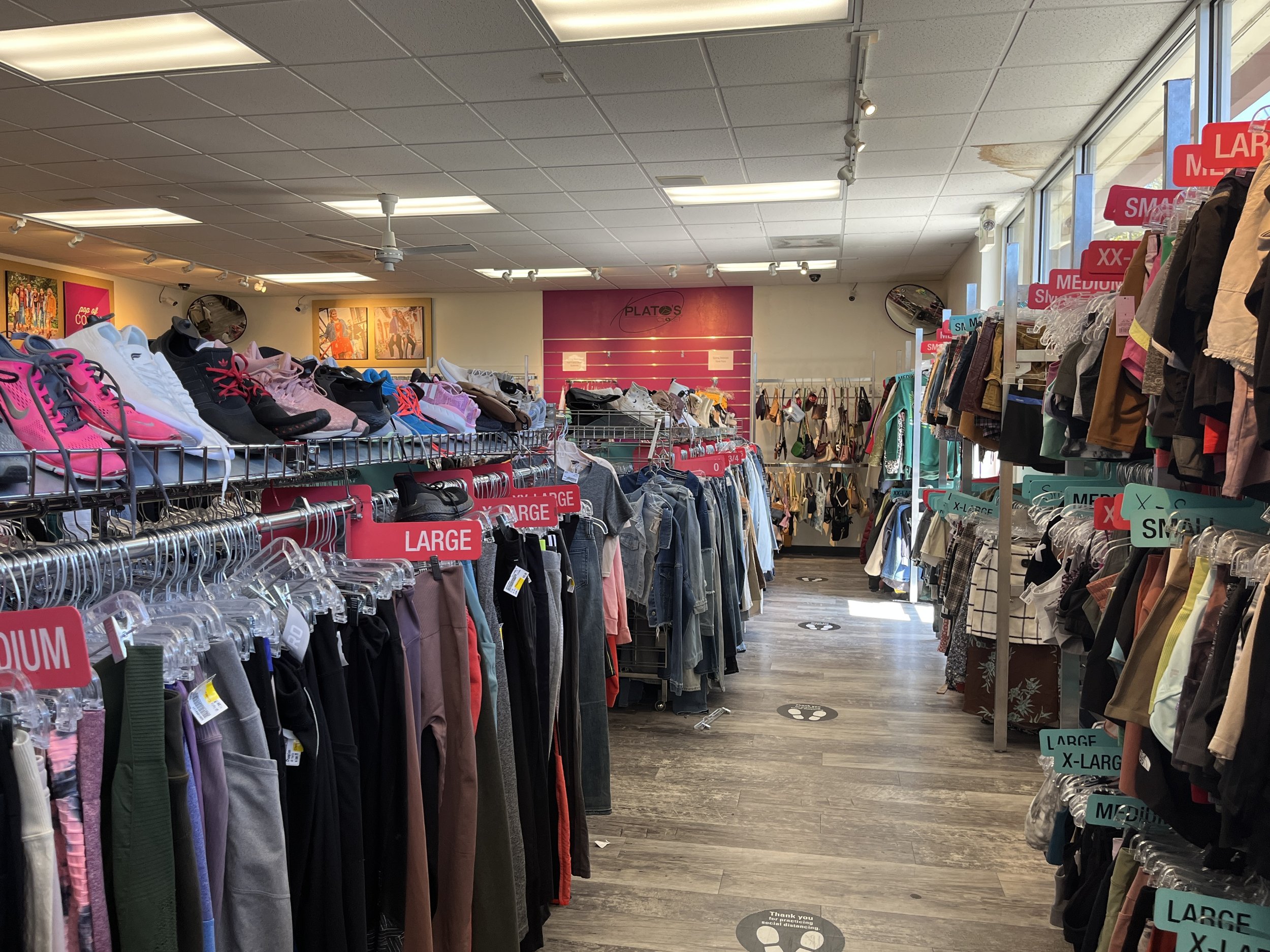Thrifting and its evolution through time
Racks of clothing inside Plato's Closet (Photo: Maxine Salvador, The Puma Prensa)
By Maxine Salvador, A&E editor
“Out with the old and in with the new” is often the mindset of those who, for example, are looking to clear out their closet of old, overused clothing in order to fit new, trendy clothes. But, in today’s society, the phrase seems to be a little different: “out with the old and in with the… old?”
Buying clothes from thrift stores is the latest trend, despite the idea of buying second-hand clothes for cheaper prices having been around since the 19th century. Generation Z, babies born from 1997 to 2012, is a large contributor to this popularity increase, as many teens find themselves thrifting for all kinds of styles.
Thrifting dates back to ancient times when religious organizations and charities opened clothing stores that sold second-hand clothing to raise money for their causes. During this time, the idea of pushing for sustainability and saving money was extremely popular, so, by the 19th century, more organized thrift stores opened in Europe and the United States. At the time, buying second-hand clothing only cost a fraction of the price of brand new clothes, so this option aimed (and continues to aim) to reduce poverty and make clothes more affordable.
As years and years went by, thrifting became widely popular, to the point where it extends beyond second hand clothing into furniture, toys, jewelry, etc. all of which becoming more common. Clothes bought from thrift stores also support sustainability practices, helping clothes to have longer lives. This also reduces waste since clothes are being repurposed as opposed to ending up in landfills.
To this day, sustainability practices such as thrifting are smart ideas to preserve the earth and overall save money. And while the majority of popular thrift stores don’t sell used clothes to fund religion anymore, the modern generation puts more of an emphasis on the sustainable fashion aspect, some even making it a lifestyle choice. Thrift stores hold much more of a variety of clothing styles compared to other fast fashion stores, so teens today take particular interest in shopping second-hand to find different options in one place.
Senior Nat Romandy is an avid thrifter and has been their whole life. “I usually thrift clothing and I find nice stuff that can be worn multiple times. Most of my pants and jeans are thrifted because they’re so expensive usually,” said Romandy. They serve as an example of someone who goes thrifting for cheaper priced clothing, though still buying clothes in good condition that will continue to last a long time.
Plato's Closet in Santa Rosa (Photo: Maxine Salvador, The Puma Prensa)
“Thrifting is beneficial because there’s a wider selection. If you just go to a store looking for one specific thing, you might have to go to multiple different stores to find what you want,” said Romandy. As thrifting continues to become a more common trend, more teens donate their clothes, so not just vintage clothing can be found at thrift stores. In fact, there are many thrift stores today that gear their clothing styles towards teens and young adults, such as Plato’s Closet, as opposed to Goodwill and St. Vincent De Paul—thrift stores that have styles that aren’t just for teens (they also sell furniture, books, movies, CD’s, etc.).
“Recently people like more of an alternative style, and that’s easy to find at a thrift store,” said Romandy. “I also feel like I find interesting things every time.” Thrifting has been a way for teens to express themselves through their sense of style. What better way to achieve this than to thrift clothes for cheaper prices as well as find many clothing styles in one place?
Organized racks of clothing by brand (Photo: Maxine Salvador, The Puma Prensa)
From 19th century thrift stores made by religious organizations to now thrift stores that provide the latest trends, thrifting continues to thrive in our society. It’s a sustainable practice that will have beneficial impacts on our planet in the long run, and Romandy fully supports it. “I think it’s a good thing because it’s always better to buy things second hand instead of continually buying things and donating them without having really used them.”



